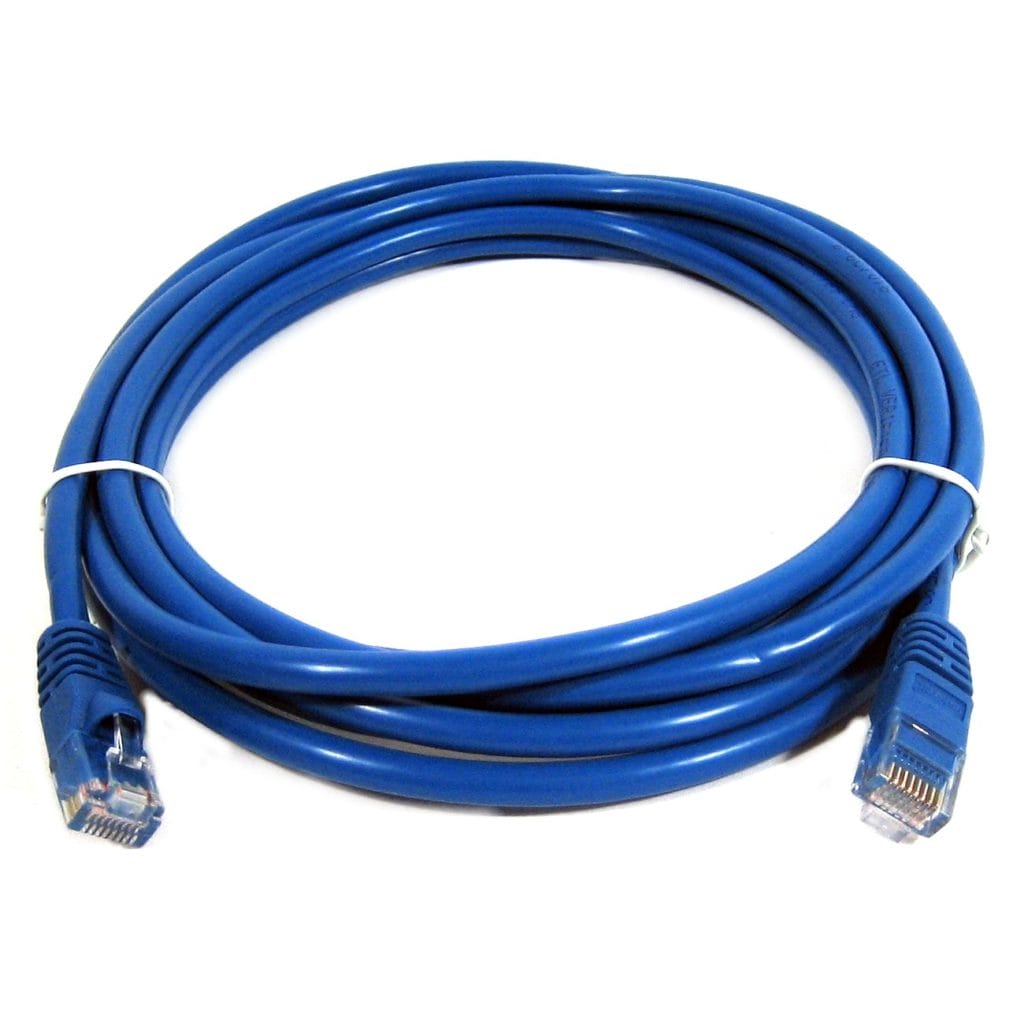Ethernet Wiring at Home

Ethernet Wiring: a reader asked:
I am getting an electrician to come and install ethernet wiring at my house. We’ve tried several different wifi solutions and none seem to give me a fast enough connection for video conferencing. Three questions: Should I install Cat7 cable or is Cat6 good enough? Also, should I buy the cable and wall plates/Keystone jacks myself? Is there anything else I’ll need?
Cat7 costs 50% more than Cat6e, so for residential use it’s probably not worth the extra expense. Not only is the cable more expensive, but wiring Cat7 connections may also be more expensive. Cat6e runs plenty fast for you (10gb/sec). When it comes to the speed of your internet service, the slowest part of the chain of connections between your computer and the internet is always is going to be the fastest speed you’ll achieve overall. For residential, that slowest speed is either your wifi speed (highly variable), or the level of internet service you buy from your internet service provider (such as Verizon, Comcast or Cox). Residential internet service usually tops out at 1gb/sec, so Cat6e at 10gb/sec is more than you’ll need. You could save a bit more by going with Cat5e, but that’s limited to 1gb/sec, which gives you no room for future speed increases.
I’m sure that your electrician can provide either cable type as well as the wall plates/keystones, just be sure to tell them in advance so they can bring the appropriate supplies. If you’d prefer to get the parts yourself, you’ll need the below list of parts, and enough to cover all the places you’ll be wiring.
One nice thing about installing ethernet wall outlets is that they’re low-voltage, so they don’t require a standard box wiring enclosure within the wall. So you’ll need (for each location):

- Something to hold the wall plate to the wall, like: https://www.amazon.com/dp/B07J4YS51F/,
- the wall plate and keystone jack for each location, such as https://www.amazon.com/Port-Ethernet-Wall-Plate-Compatible/dp/B07TYVQZTG?th=1,
- Cat6e cabling, enough length to easily reach the point from the router to each location, and
- RJ45 crimp-type connectors for both ends of the cable, such as https://www.amazon.com/CableCreation-100-PACK-Connector-Connectors-Transparent/dp/B01K9Z4FT2
While you can get all the above yourself, you’ll most likely want your electrician to supply the Cat6e cabling and RJ45 connectors. This cabling comes in 1000 foot rolls, and you’ll not want to be stuck with a lot of leftover cable. The RJ45 connectors often come in bulk (100 connectors), again you don’t want to have a lot of leftovers.

One other thing you might need: At the router point, you need to make sure you have enough ports to feed all the lines they are adding, so an ethernet switch might be needed – your router probably has only 4 ports. Such as this 8-port one: https://www.amazon.com/NETGEAR-Ethernet-Unmanaged-Lifetime-Protection/dp/B00MPVR50A?th=1 or this 16-port one: https://www.amazon.com/NETGEAR-Ethernet-Unmanaged-Protection-GS116NA/dp/B00023DRLO?th=1.
You might save a few bucks supplying all the above (except the cable and RJ-45 connectors) yourself, but check with the electrician first, as their contractor pricing even with a markup may be less than your retail cost.
Because you’re having the electrician add Ethernet cabling inside the walls after the wallboard is installed and painted, your labor cost is going to be higher because the electrician will have to fish wires inside the walls while trying to avoid cutting too many holes in your walls. Once that cable is run, then it’s a simple/quick matter to install the connectors and wall plates. Be sure to have enough Ethernet ports available at the router, and you may need to locate the router near to where the electrician can easily fish wires (e.g., an unfinished area of the basement is best).
This website runs on a patronage model. If you find my answers of value, please consider supporting me by sending any dollar amount via:
or by mailing a check/cash to PosiTek.net LLC 1934 Old Gallows Road, Suite 350, Tysons Corner VA 22182. I am not a non-profit, but your support helps me to continue delivering advice and consumer technology support to the public. Thanks!







